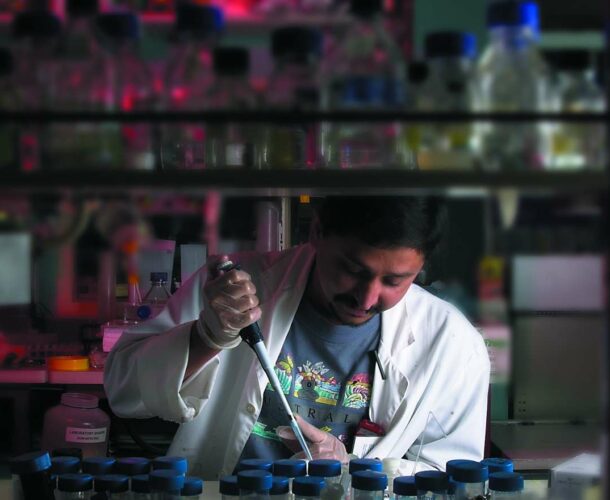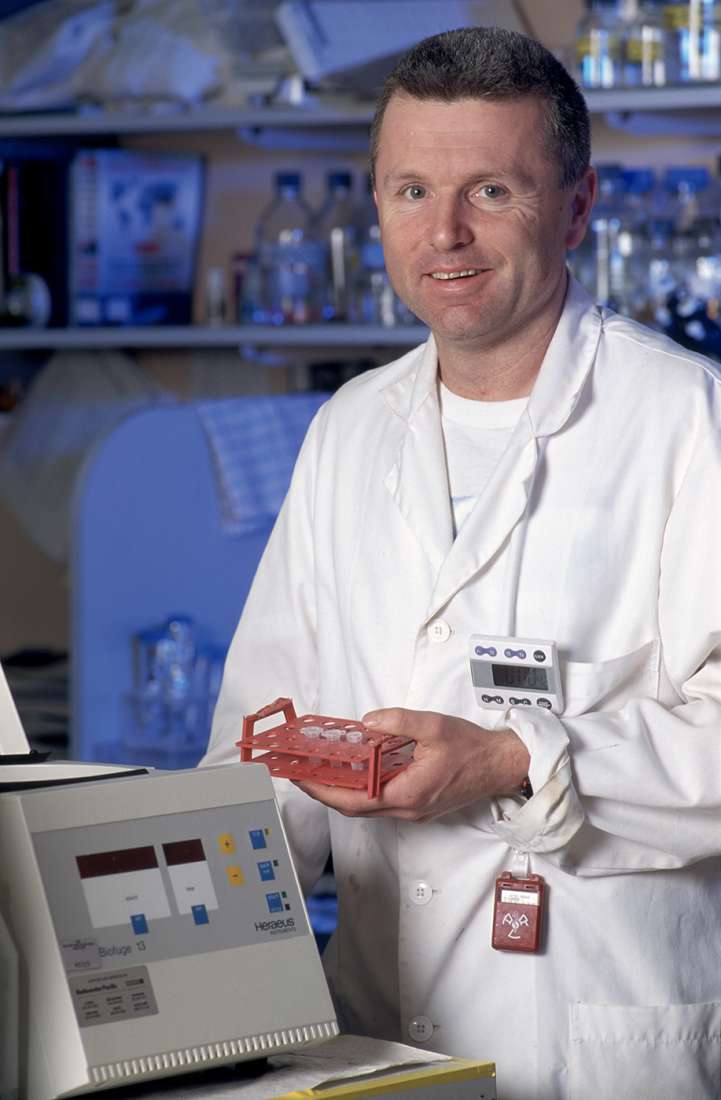A team of scientists led by Professor Jerry Adams, Professor Suzanne Cory and Professor Andreas Strasser are striving to understand how the protein Bcl-2 keeps cells alive.
As part of this, in 1998 Professor Liam O’Connor and Professor David Huang discover a previously unknown protein, BIM, that triggers cell death. This discovery underpins more than a decade of investigations into BIM’s function, providing new insights into the control of cell death, and the link between disrupted cell death and diseases including cancer and autoimmune diseases.
Killer in hiding
Although BIM can force cells to die, normal healthy cells can somehow stifle BIM’s deadly behaviour. In 1999 Strasser and Dr Hamsa Puthalakath reveal that BIM can be sequestered in a harmless form in cells, attached to the proteins that form the cell’s ‘skeleton’. When faced with certain lethal situations, cells release BIM its hide-out, triggering rapid cell death.
A necessary evil
BIM triggers cell death, but what does this mean in our body? To address this question Dr Philippe Bouillet, Strasser and Adams study cells that lack BIM. In 1999 they show that in the absence of BIM, too many immune cells are produced. This causes a lupus-like autoimmune disease reminiscent of Strasser’s earlier discovery that immune cells that resist normal cell death cues can trigger autoimmune disease. Subsequent research led by Bouillet and Strasser reinforces the importance of immune cell death in preventing immune disorders. BIM is found to be an essential part of the body’s system for removing dangerous autoimmune B and T cells.
Suppressing cancer
Cancer cells develop changes that make them immortal. In 2004 Dr Alex Egle and Cory establish that cells that have lost BIM protein are predisposed to develop into cancer cells. Our scientists also pinpoint the role of BIM in the death of cancer cells that have been treated with a number of different anti-cancer therapies.
These findings add impetus to a global race to find medications that act like BIM to force cell death, a potential treatment for cancer. One such agent, ABT-199/GDC-0199 shows promise in clinical trials as a treatment for leukaemia.







